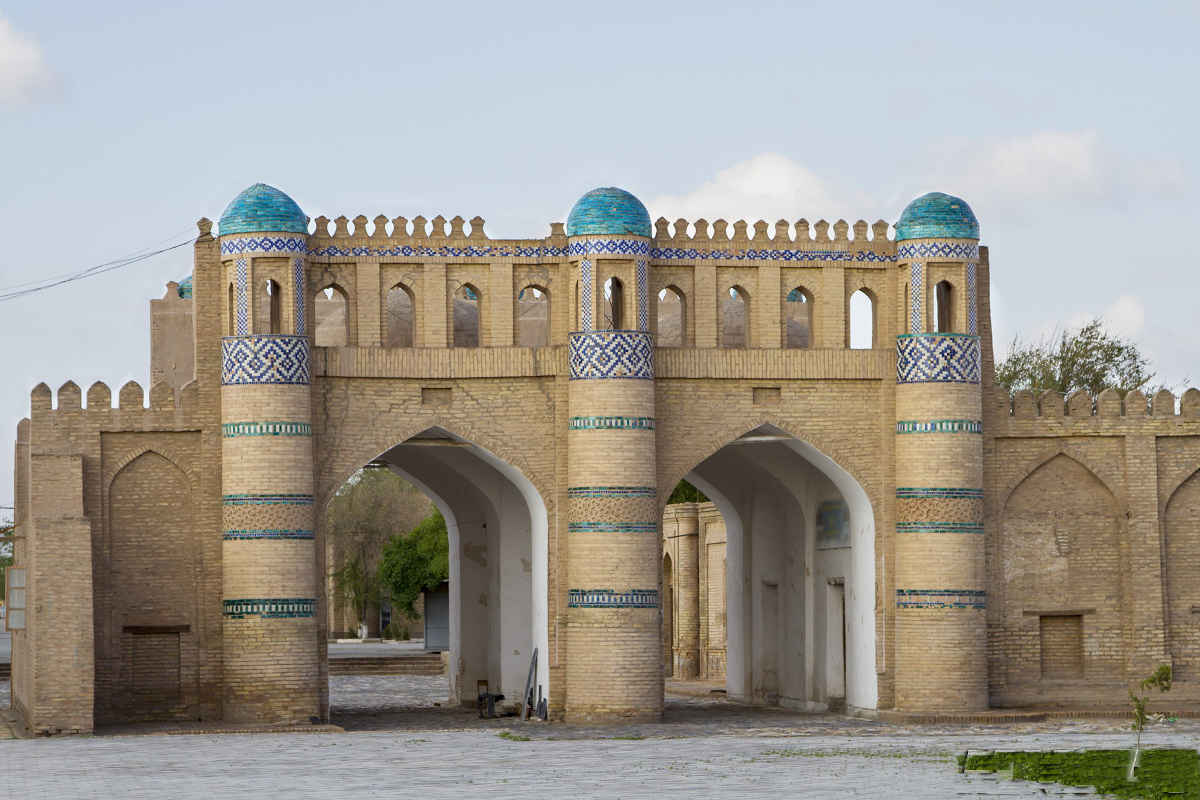Khiva - the Gate Gandimyan Darvaza

The Gate Gandimyan Darvaza in Khiva: an architectural monument and historical testimony
The Gandimyan Darvaza, one of Khiva’s most important historical gates, was built in 1842 and was an integral part of the outer city wall of Dishan-Kala, the extended settlement of Khiva. As a central entrance and exit gate, it served not only to protect the city, but also as a strategic checkpoint for trade and travel activities in the Khorezm region. The gate took its name from the nearby village of Gandimyan, which played a prominent role in the political history of the Khanate of Khiva.
In August 1873, the famous Gandimyan Treaty was signed in this village, an agreement that sealed the official incorporation of the Khanate of Khiva into the Russian Empire. This event marked a profound turning point in the history of the region. The signing of the treaty was the result of a military offensive by the Tsarist Empire, which is interpreted as an expression of Russia’s colonial expansion policy in Central Asia. The khanate, which until then had maintained an independent, albeit politically unstable, power structure, was henceforth degraded to a Russian protectorate and lost its complete sovereignty.
The annexation of Khorezm to the Russian Empire brought with it far-reaching social and economic changes. One of the most important aspects was the abolition of slavery, which until then had been a fundamental part of the social order of the khanate. At the same time, traditional feudal structures were gradually dissolved and internal conflicts, which had destabilised the region for centuries, were reduced. Nevertheless, Russian rule also led to Khorezm’s increasing economic dependence on Russia, as Russian commercial and industrial capital spread throughout the region and restructured the local market and agricultural production.
With the arrival of Russian merchants, craftsmen and exiles, who were sent to Khiva as ‘unreliable elements’ from the Tsarist Empire, a slow but lasting cultural and economic transformation began. The introduction of new technologies, modern irrigation systems, mechanised mills and Western construction methods changed the traditional cityscape and laid the foundations for industrial development, which later intensified during the Soviet period.
Although the Gate Gandimyan Darvaza in Khiva originally fulfilled a military protective function, in the 20th century it became a symbol of Khorezm’s colonial transformation and modernisation. However, in the course of Soviet industrialisation and the transformation of Khiva’s urban landscape, the gate was demolished to make way for a cotton factory. This meant the disappearance of an important architectural monument that had played a central role in the city’s history for decades.
It was not until the 1970s, when extensive restoration projects were initiated to preserve the cultural heritage of Khiva, that the Gandimyan Darvaza was rebuilt. The reconstruction was based on historical sketches, photographs and reports and made it possible to restore the gate to its original form. Today, the Gandimyan Darvaza stands as an impressive testimony to Khorezm’s chequered history, a reminder of the conquests, colonial changes, economic transformations and cultural exchanges that have shaped this region over the centuries.
